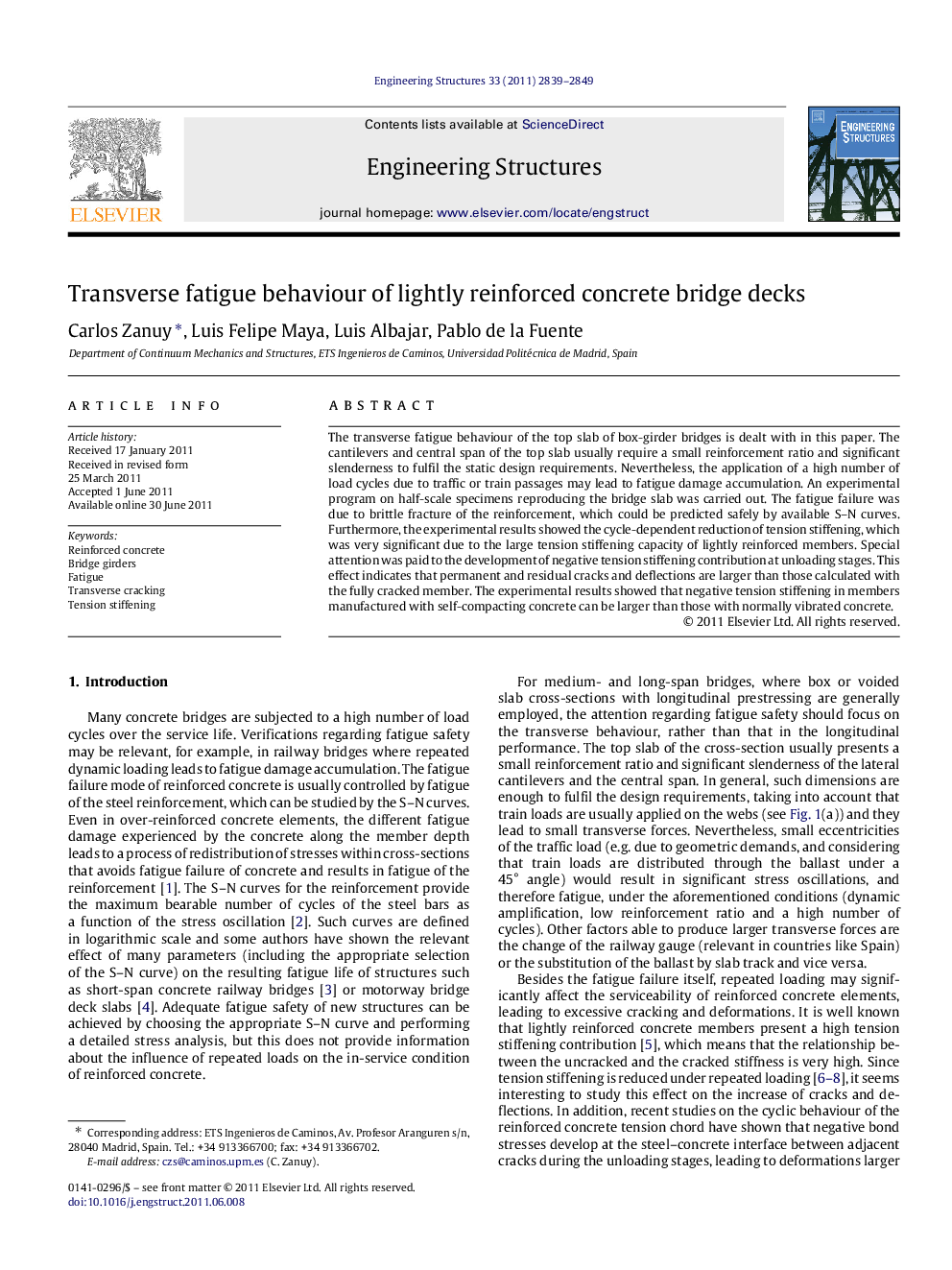| Article ID | Journal | Published Year | Pages | File Type |
|---|---|---|---|---|
| 267662 | Engineering Structures | 2011 | 11 Pages |
The transverse fatigue behaviour of the top slab of box-girder bridges is dealt with in this paper. The cantilevers and central span of the top slab usually require a small reinforcement ratio and significant slenderness to fulfil the static design requirements. Nevertheless, the application of a high number of load cycles due to traffic or train passages may lead to fatigue damage accumulation. An experimental program on half-scale specimens reproducing the bridge slab was carried out. The fatigue failure was due to brittle fracture of the reinforcement, which could be predicted safely by available S–N curves. Furthermore, the experimental results showed the cycle-dependent reduction of tension stiffening, which was very significant due to the large tension stiffening capacity of lightly reinforced members. Special attention was paid to the development of negative tension stiffening contribution at unloading stages. This effect indicates that permanent and residual cracks and deflections are larger than those calculated with the fully cracked member. The experimental results showed that negative tension stiffening in members manufactured with self-compacting concrete can be larger than those with normally vibrated concrete.
► Transverse fatigue tests were conducted on specimens reproducing the top slab of concrete bridges. ► Repeated loads significantly affect serviceability since deflections increase with load cycles. ► Negative tension stiffening develops in the unloading stages.
